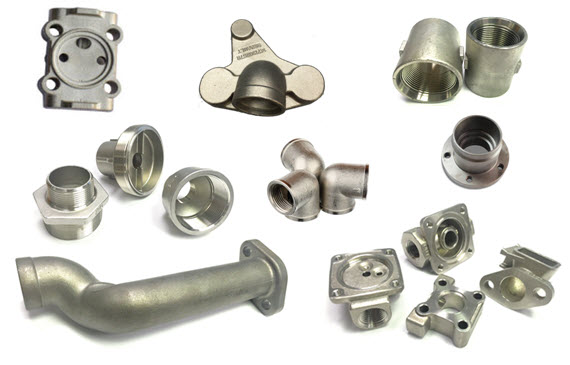The Pros and Cons of Investment CastingPosted by Groman on July 13th, 2021 Financial investment Casting ForceBeyond supplies top notch custom-made ferrous and also non-ferrous financial investment casting components and also parts for a large range of markets. Investment spreading is a really versatile process which is optimal for simple or intricate, reduced or high volume manufacturing. We generate financial investment spreadings with product such as stainless steel, duplex stainless-steel, titanium, carbon steel, device steel, and light weight aluminum alloys etc. Weight range from a few grams to practically one statistics load. We also give a broad series of secondary service consisting of machining, surface area completing and so on . What Is Investment Casting? Financial investment casting refers to the development of porcelains around a wax pattern to develop a shell for casting liquified steel. As soon as wax patterns are created, they are merged the gate system, submersed in slurry as well as sand to develop a split shell, and then replaced by molten metal such as stainless-steel, light weight aluminum, or the like. investment casting components Exactly How are Financial Investment Castings Made? Investment casting includes developing an original wax model, building the picture with plaster as well as successive layers up until a solid shell surrounds the model. After melting the wax, pour the liquified gold or bronze right into the mold to create a perfect replica of the original wax pattern. Investment casting supplies affordable undercutting, high resolution, Investment Casting advanced detail as well as smooth surface area coating contrasted to machining splittings up. In many cases, financial investment spreading is the only way the component can be made financially. Enjoy the video of our financial investment casting foundry to discover exactly how investment castings such as stainless steel castings, titanium spreadings as well as carbon steel spreadings are made. Video likewise offered on youtube.com. Direct Tolerance of Financial Investment Casting Typical linear resistances of investment spreading are as complies with as a general rule: Approximately 1" +/ -.010", for each added inch up to 10 inches +/ -.003" per inch. For dimensions higher than ten inches allow +/ -.005" per inch. Secondary procedures such as straightening as well as sizing will create closer dimensional resistance. Dimensions Normal Tolerance of Investment Casting Up to 1” +/- .010” Up to 2” +/- .013” Up to 3” +/- .016” Up to 4” +/- .019” Up to 5” +/- .022” Up to 6” +/- .025” Up to 7” +/- .028” Up to 8” +/- .031” Up to 9” +/- .034” Up to 10” +/- .037” > 10” allow +/- .005” per inch An exception to the linear tolerance exists on wall thickness where the tolerance must be a minimum of +/- .020”. Advantages of Investment Casting The mold surface featuring low roughness and the material offering ample refractory strength and chemical inertness can yield high quality surface castings The mass accuracy factor of the castings can be as high as 0.85-0.95 for less metal machined and fewer metal shavings Investment castings use the materials with no mold to be disassembled when removing them; mold materials are highly flame retardant and can give a better fill-in if high-temperature heated before pouring The metal load of the investment casting process is 90-95%, a value similar to that of Injection Moulding Fewer environmental hazards from the foundry process Sizes: 0.1 in to more than 3 feet Weights: a few grams to one metric ton Surface: very smooth finish
Tight tolerances Reliable process controls and repeatability Design and casting versatility Efficient production Affordable tooling Material variety Like it? Share it! |



